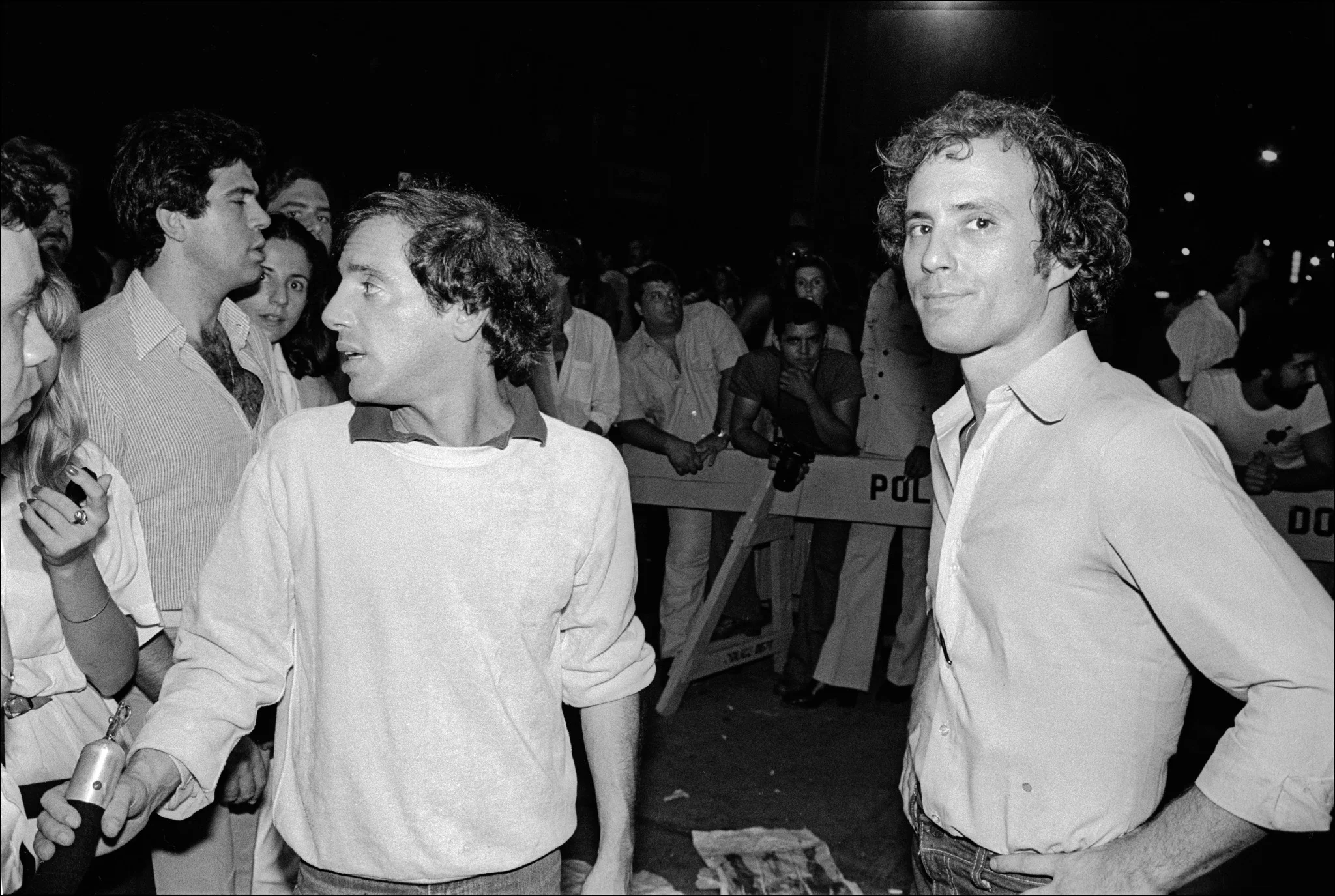Studio 54: Enlightening doc captures a moment and tells us which Rolling Stones had to pay to get in
By Jim Slotek
Rating: B
There’ve been plenty of nostalgic backward glances at Studio 54, the flashpoint of the celeb-spiced disco era, and liberation signpost for gay pride. But most tend to concentrate, not on the showman who made it possible, but the show-off.
The show-off was the late Steve Rubell, while the showman was his best friend and business partner Ian Schrager
Rubell’s aggressive spotlight-hogging is seen in all its needy glory in Matt Tyrnauer’s documentary Studio 54. He’s the guy who was portrayed as a virtual gargoyle by Mike Myers in the 1998 movie 54,and who’s seen here in his famous role of velvet-rope judge, handpicking the “bridge and tunnel crowd” who lined up for a chance to get in and rub elbows (and maybe even dance with) Mick and Bianca Jagger, Liza Minnelli, Diana Ross and Sylvester Stallone.
Studio 54’s Steve Rubell (left) and no-longer-silent partner Ian Schrager
(Even celebs sometimes barely met his standards – we’re told the Rolling Stones got in, but only Mick and Keith got in for free).
But Studio 54 gives equal time to the publicity-shunning Schrager, whose vision it was to buy and turn a former CBS studio theatre in a dangerous neighbourhood on 54th St. into a theatre of lusty, dancing humanity. He kept the motif and even opened the purse-strings for proto-Cirque du Soleil stage shows that could cost $50,000 for a single night, just to provide kitschy gimmickry for the famous regulars.
It was a big-money gamble in the ‘70s (half a million dollars, largely coughed up by an investor named Jack Dushey), one that captured the imagination of the world and paid off to an extent that tempted fate. In another era, free and open sex and cocaine use would be enough to shut a nightclub down. But as recounted by Tyrnauer (Valentino: The Last Emperor), plain old greed and tax evasion (up to and including oddball stashes of huge amounts of cash) brought the whole thing to the ground and sent the pals to jail.
This is, as I say, much more Schrager’s story than any previously told – mostly owing to the fact that Rubell died of AIDS in 1989 (though he kept his diagnosis secret right through to the obituaries). The quieter Schrager proved his acumen on his own as a global boutique hotelier, who was pardoned for his disco-era tax evasion by President Barack Obama.
There are nuggets in Studio 54 that were new to me, including Rubell and Schrager shaving time off their prison sentences by providing evidence of tax fraud by their nightclub competitors (ie. ratting them out).
The rest is history as mythology, interviews with surviving bar-staff (AIDS took its toll on both the patrons and the players) and archival footage of newly-out club-goers extolling their “safe place” and private paradise. In one particularly bizarre segment, a waaaay pre-cosmetic-surgery Michael Jackson praises his good friend Rubell as being genuine and real. It evokes a later interview with Elizabeth Taylor where she called Jackson, “one of the most normal people I know.”
It’s all pretty rosy, though legendary guitarist-producer and Chic frontman Nile Rodgers offers a thoughtful last word about the place, conflating the deep, late ‘70s/early ‘80s recession, and Middle American resentment, with the glamourous and licentious images they received about nightlife in New York. The movie cuts to the election of Ronald Reagan, with the suggestion that Studio 54 might even have helped him get elected.
If there’s a weakness to the documentary, it’s that it has a documentary budget, and must make do with a second-tier soundtrack. When there are actual hits, it’s one-hit stuff like Andrea True Connection’s "More, More, More," which is cheaper than Donna Summer and The Village People, but does a poorer job of capturing the aural atmosphere of the Me Decade’s ultimate shrine.
Studio 54. Directed by Matt Tyrnauer. Starring Ian Schrager, Steve Rubell, Nile Rodgers. Now playing at the Hot Docs Ted Rogers Cinema.

